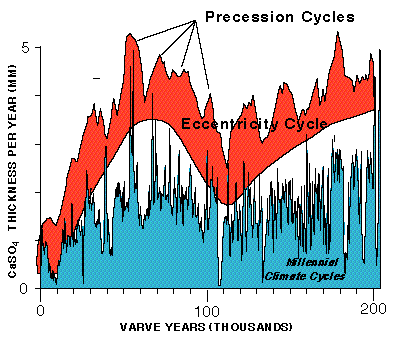
The message from our long record of climate change was a simple one- our earth's climate was being held in an incredibly delicate balance. We know this because there are only slight differences in the amount of heat that reaches the earth from the sun during changes in precession and eccentricity. Such differences should have a feeble effect on climate. Yet here they were, telling us that our climate responds to very small changes in forcing. One important implication of the record from the Castile is that climate is likely to be effected by human activity.